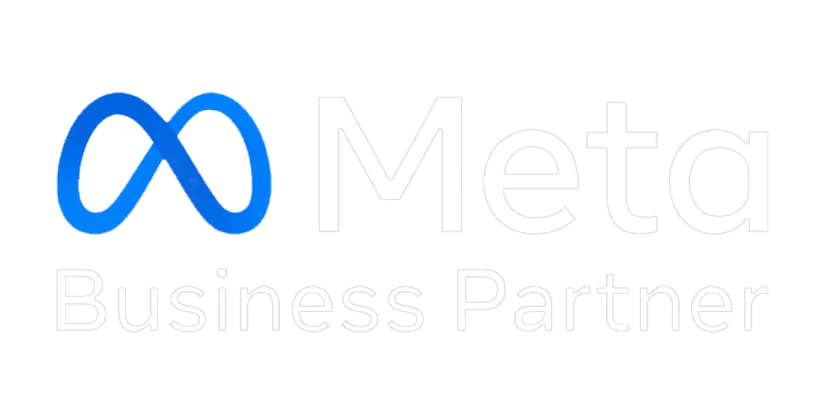Next-Gen Customer Service for D2C: Real-Time Support That Drives Growth

Introduction Direct-to-consumer (D2C) brands are reshaping commerce by building direct relationships with customers. But with great access comes great responsibility: today’s shoppers expect instant, personalized, and seamless support. In 2025, real-time customer service isn’t just a “nice-to-have”—it’s a growth driver that impacts loyalty, trust, and repeat purchases. Why Real-Time Support Matters for D2C Brands D2C customers no longer tolerate long wait times. Whether on a product page, checkout, or post-purchase stage, they expect immediate answers. By controlling the entire customer journey, D2C brands can tailor real-time support to maximize lifetime value and ensure customers come back. Next-Gen Real-Time Support Technologies AI-Powered Chatbots & Virtual Assistants Advanced tools like Tidio, LiveAgent, and Zendesk deliver 24/7 live chat with intelligent routing. Emerging systems such as SentiCore even detect customer sentiment, offering empathy-driven responses and reducing escalations. Agentic AI & Autonomous Support Beyond simple chatbots, agentic AI can handle complex tasks such as refunds, returns, and shipment updates dynamically, freeing human agents for high-value conversations. Hybrid Human–AI Support Models Industry leaders like Verizon are showing the power of hybrid systems—AI handles routine queries, while trained human agents resolve nuanced issues. This ensures efficiency without losing the human touch. Omnichannel & Messaging Integration From WhatsApp Business to voice assistants, real-time support across multiple touchpoints is key. D2C brands adopting unified, omnichannel experiences keep engagement consistent and frictionless. Best Practices for Implementing Real-Time Support 💡 Pro Tip: Explore advanced solutions at The Bot Mode’s customer service for D2C to implement scalable real-time support strategies. Real-World Use Cases & Impact These success stories prove that real-time service directly fuels growth and retention. Conclusion For D2C brands, real-time customer service is no longer optional—it’s a competitive edge. By combining AI, automation, and human empathy, brands can deliver instant, personalized, and scalable support that drives growth, loyalty, and trust. The future belongs to brands that see customer support not as a cost center, but as a growth engine. FAQs Q1. What defines “real-time customer support”? It means instantly resolving customer queries via live chat, messaging apps, or voice assistants without delay. Q2. How can a D2C brand balance automation and personalization? By using AI for routine tasks and human agents for complex, emotional interactions. Q3. Which channels should D2C brands prioritize for real-time support in 2025? WhatsApp, live chat, AI-powered assistants, and voice-enabled platforms.
The Psychology of Clicks: Crafting WhatsApp Buttons That Convert
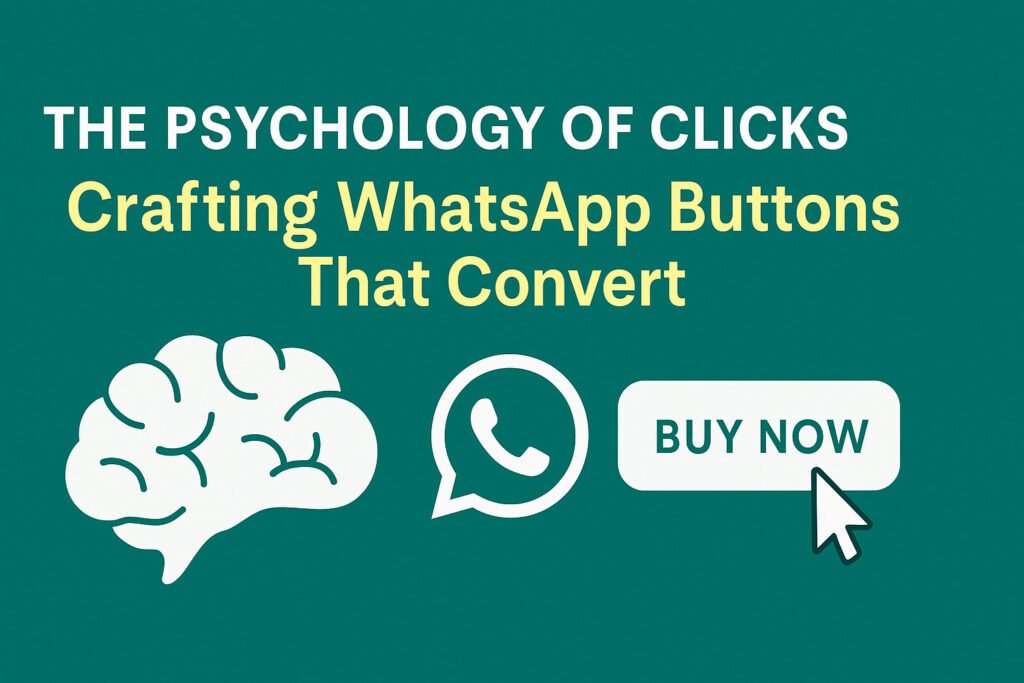
Introduction For D2C brands, every click matters. Whether it’s recovering an abandoned cart, confirming a COD order, or nudging a repeat purchase—the button your customer taps on WhatsApp can make or break the conversion. In this blog, we’ll dive deep into the psychology of clicks, and how to craft WhatsApp buttons that don’t just look good—but actually drive results. Why WhatsApp Buttons Matter for D2C Brands The Psychology Behind a Click Types of WhatsApp Buttons That Convert Why This Works for Indian D2C Brands In India, over 80% of D2C orders are COD. That’s why WhatsApp buttons like “Confirm COD” or “Pay Online & Save” are powerful in reducing Return-to-Origin (RTO) issues.Global D2C brands, on the other hand, can focus on “Track Shipment” or “Get Support” buttons that enhance customer experience post-purchase. Answering Voice & AI Queries Voice assistants and AI rely on clear, action-driven text. Buttons like “Buy Now” and “Track Order” are AEO-friendly because they directly answer queries like: Pro Tips for Crafting High-Converting WhatsApp Buttons Keep text under 20 charactersUse verbs → “Buy”, “Confirm”, “Track”Always align with user intent (pre-purchase vs post-purchase)Test 2–3 button variants and track CTR in TheBotMode analyticsPair buttons with conversational text, not robotic messages Conclusion WhatsApp isn’t just a chat app—it’s a conversion engine. For D2C brands, the right button text + psychological triggers = more sales, less RTO, and happier customers. With TheBotMode, you can design, test, and optimize WhatsApp buttons at scale, making every click count. FAQs Q1: How many buttons can I add to a WhatsApp message? You can add up to 3 quick reply buttons or 2 call-to-action buttons per message template. Q2: Do WhatsApp buttons work on all devices? Yes, buttons are supported across Android, iOS, and WhatsApp Web. Q3: How do buttons reduce COD RTOs? By asking customers to confirm orders, you eliminate fake CODs and reduce logistics costs. Q4: Can I customize buttons per customer? Yes, using personalization tags in TheBotMode, you can send dynamic button text based on name, product, or offer.
The Power of Repeat Orders: Retention Tactics That Work for D2C Brands

The Power of Repeat Orders for D2C Brands In the fast-evolving D2C landscape, repeat orders are the lifeblood of sustainable growth. While many brands focus heavily on acquisition, the real profitability lies in turning one-time buyers into repeat customers. Repeat orders not only reduce acquisition costs but also amplify customer lifetime value (CLV) and create strong brand advocacy. Why Repeat Orders Are Your D2C Brand’s Secret Growth Engine Customer acquisition costs (CAC) are climbing across digital platforms, making retention a smarter and more profitable growth strategy. Repeat customers spend more, convert faster, and are more likely to refer friends and family. For D2C brands, cultivating repeat orders creates a predictable revenue stream and builds long-term trust. Retention Tactics That Drive Repeat Orders Hyper-Personalization Across the Customer Journey Customers crave tailored experiences. From personalized emails to dynamic SMS campaigns, hyper-personalization can lift sales by up to 20%. Post-purchase personalization—such as product care tips or curated upsell recommendations—creates a seamless journey that keeps customers engaged and primed to return. Fast & Reliable Delivery as Emotional Loyalty Builder Speed matters. Studies show fast delivery can increase reorder likelihood by 74%, while delays risk high churn. Transparency in shipping updates and reliable fulfillment turns logistics into a loyalty driver. Loyalty & Tiered Reward Programs Tiered loyalty programs—offering points, perks, or exclusive rewards—can increase repeat purchases by 15–25%. The key is balancing transactional incentives (discounts, free shipping) with emotional rewards (exclusive content, VIP experiences). Subscription Models & Auto-Restock Reminders Subscriptions help brands build habitual buying and ensure consistent revenue. Auto-restock reminders further reduce friction by prompting one-click reorders at just the right time, minimizing cart abandonment. Post-Purchase Upsells & One-Click Reorders Smart post-purchase strategies, such as upselling on order confirmation pages or offering limited-time bundles, boost AOV (average order value). One-click reorder buttons simplify the customer journey and create stickiness. Community-Driven Engagement & Gamification Beyond transactions, today’s customers want belonging. Building communities—through user-generated content, gamified loyalty systems, or brand clubs—creates emotional bonds that keep customers coming back. Tech-Enabled Custom App Features A dedicated app elevates engagement with features like push notifications, loyalty integration, and personalized reorder experiences. It strengthens brand exclusivity and ensures customers stay in your ecosystem. Genuine Personal Touches (Human-First Tactics) Sometimes the smallest gestures create the biggest impact. Handwritten thank-you notes, surprise gifts, or personalized packaging can double customer lifetime value. These touches create authentic connections that digital automation alone can’t achieve. Conclusion Repeat orders are more than just transactions—they’re the foundation of sustainable D2C growth. By blending personalization, reliable fulfillment, loyalty programs, and emotional touches, brands can transform casual buyers into lifelong advocates. When executed well, these retention tactics not only boost revenue but also future-proof your brand against rising acquisition costs. FAQs 1. How soon should I send a post-purchase follow-up? Within 24–48 hours of delivery, focusing on value and helpfulness rather than pushing another sale immediately. 2. Should loyalty programs favor discounts or experiential rewards? A balance works best—discounts drive immediate repeat purchases, while experiences (VIP events, early access) build long-term loyalty. 3. Can smaller brands compete with Amazon in delivery speed? Yes—by focusing on transparency, niche fulfillment partners, and exceptional packaging, smaller brands can still delight customers. 4. How can I personalize at scale without compromising the human feel? Combine automation tools for segmentation with genuine human touches—like personalized notes or customer support interactions—to strike the perfect balance.
Unlock the WhatsApp Blue Tick
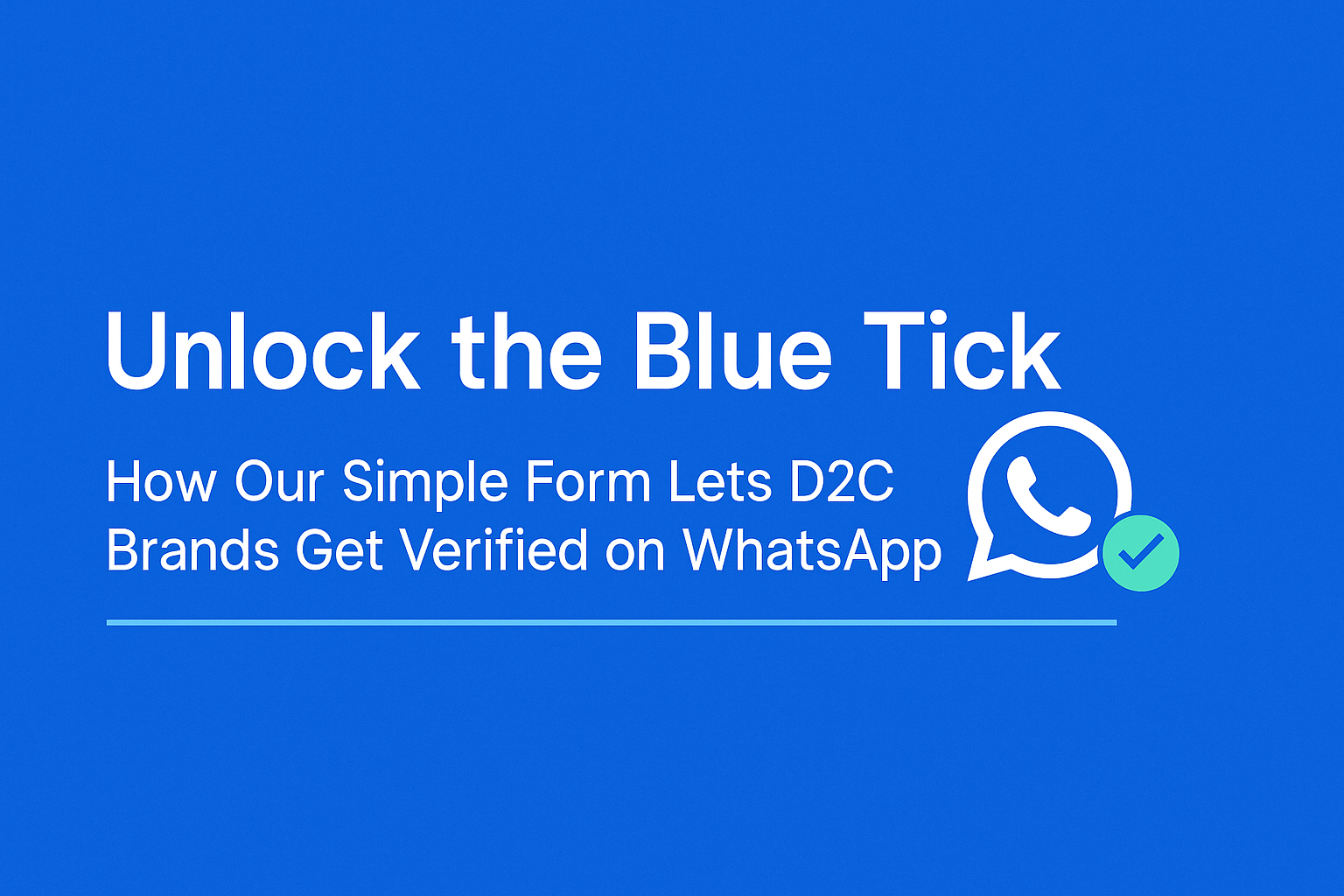
Unlock the Blue Tick: How Our Simple Form Lets D2C Brands Get Verified on WhatsApp Introduction Building trust is essential for D2C brands—and nothing communicates legitimacy more powerfully than WhatsApp’s Blue Tick verification badge. At The Botmode, we’re simplifying the process. You fill out a quick form on this landing page, and we handle the entire verification journey—from eligibility checks to submission. Let’s explore how this works, why it matters, and—most importantly—how it drives growth for your brand. Why WhatsApp Verification Matters for D2C Brands 1. Instantly Builds Credibility The WhatsApp Blue Tick is a strong trust signal—showing customers you’re authentic and official. Brands with the Blue Tick often see significantly higher open and response rates, with messages achieving close to a 98% open rate. 2. Streamlines Messaging and Campaign Performance Verified accounts tend to experience better engagement in broadcasts and chat interactions, which is key for promotions, cart recovery, and customer support. 3. Consistent Branding Across Meta Platforms By aligning your WhatsApp verification with Meta’s blue tick standards, your brand maintains a coherent and trusted presence across Instagram, Facebook, and WhatsApp. Here’s How Our Landing Page & Verification Form Work Step What You Do What We Do 1. Fill the Form Provide your business name, WhatsApp number, Meta Business Manager ID, and up to 5 credible media or PR links. We review your eligibility and documentation. 2. Submit with Confidence Click “Submit.” No need to navigate WhatsApp settings yourself. We handle API access, document prep, and application submission. 3. Sit Back and Track Progress Receive status updates via email—approved or follow-up needed. We monitor the application and guide any re-submissions (if needed). 4. That’s It! Once verified, you’ll enjoy the benefits of the Blue Tick. We’ll help you integrate verified status into your WhatsApp marketing. A simple form. Zero hassle. Full service. Eligibility: Are You a Fit? To streamline the process, here’s what qualifies your brand: Once Verified: What’s Next for Your D2C Growth Leverage the Blue Tick Promote the badge across your website, social media, and email—customers immediately recognize the legitimacy. Drive Conversational Commerce Use WhatsApp for support, abandoned cart messages, flash sales, and VIP broadcast lists—backed by higher engagement. Measure Success Track metrics like open rates, response times, and conversions in your WhatsApp Manager dashboard. Use these insights to refine your strategy and boost ROI. Conclusion Our streamlined landing page and form remove all the friction from WhatsApp verification. You focus on what you do best—growing your D2C brand—while TheBotmode handles the rest. Ready to unlock trust, boost engagement, and scale faster? Fill out the form above, and let’s get your Blue Tick verified and working for you. Voice‑Search Optimized FAQ Q: What is the WhatsApp Blue Tick? A: It’s a verification badge from WhatsApp (via Meta) that signals your business is legitimate and trustworthy. Q: How do I get verified? A: Just fill out the form right here—providing your business details and media links—and we’ll do the rest for you. Q: Is verification available for small D2C brands? A: Absolutely—any brand with an active WhatsApp Business profile and evidence of notability can apply. Q: How long does it take? A: Reviews usually take a few business days. If needed, you can reapply after 30 days post-rejection.
How WhatsApp Automation Helps D2C Brands Compete with Marketplaces
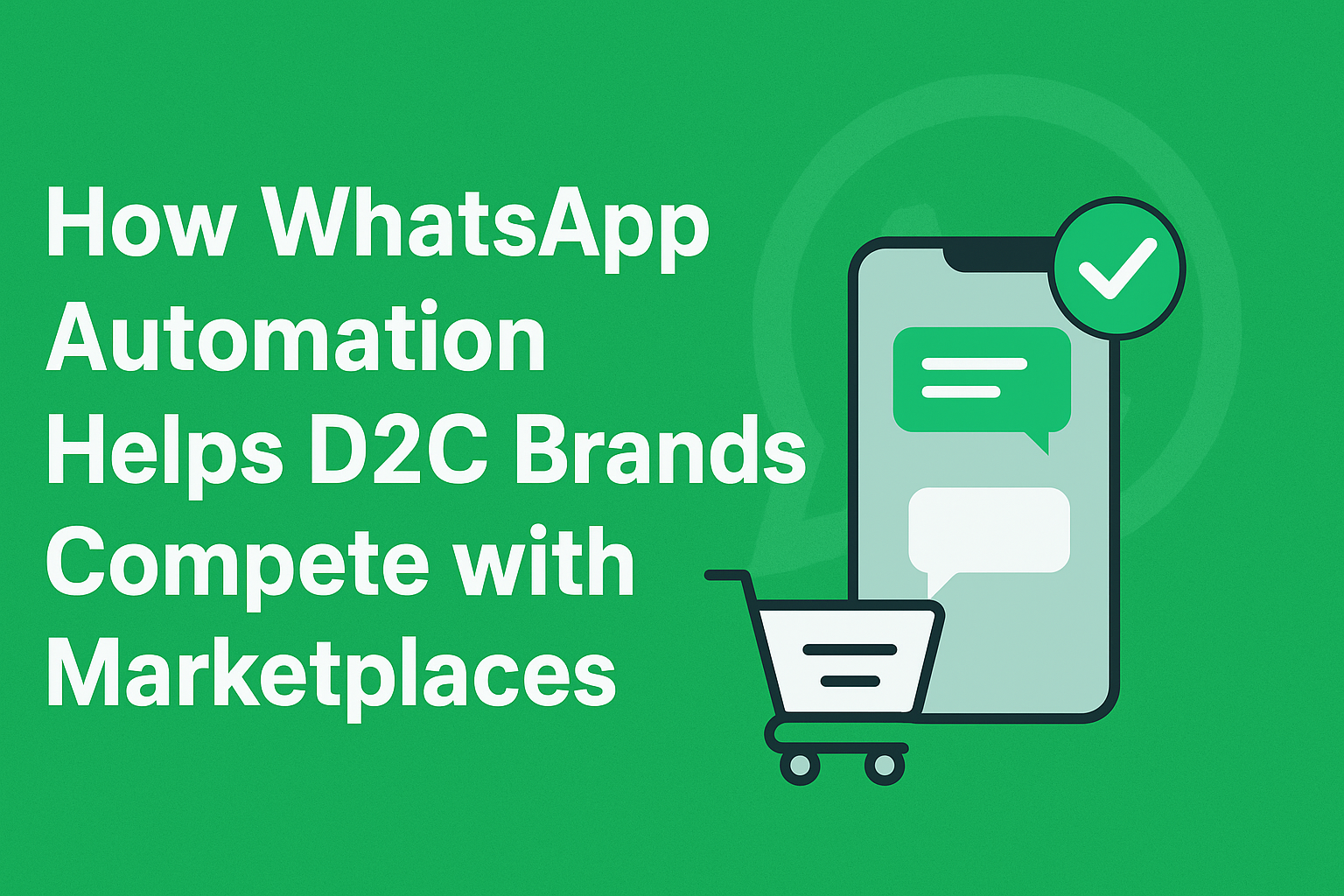
Introduction For direct-to-consumer (D2C) brands, competing with giant marketplaces like Amazon, Flipkart, or Myntra often feels like a David vs. Goliath battle. Marketplaces offer scale, convenience, and reach, while D2C brands focus on personalization, brand loyalty, and customer intimacy. This is where WhatsApp automation changes the game. By turning the world’s most popular messaging platform into a full-fledged sales, service, and marketing channel, D2C brands can engage customers directly, recover lost sales, and build loyalty—all without the high commissions and fragmented visibility of marketplaces. The WhatsApp Advantage for D2C Brands Unlike marketplaces, where your brand competes for attention, WhatsApp gives you a direct, distraction-free line to your customers. Learn more about conversational commerce solutions designed specifically for D2C growth. Key Ways WhatsApp Automation Empowers D2C Brands 1. Real-time, Automated Customer Support & Order Notifications Automated bots handle FAQs, order confirmations, delivery updates, and return requests. Customers get instant answers without waiting for agents, while brands save time and resources.👉 Explore automated WhatsApp chatbots that streamline customer service for D2C brands. 2. Cart Abandonment Recovery & Personalized Nudges With WhatsApp automation, brands can send timely reminders when customers abandon their carts. Personalized nudges—like discount codes or product recommendations—bring shoppers back to complete their purchases. 3. Conversational Campaigns & Broadcasts Instead of one-way promotions, WhatsApp allows interactive campaigns. D2C brands can send: This creates marketplace-like reach but with much higher engagement rates. Tools like The Bot Mode make it easier to manage scalable broadcasts while maintaining personalization. 4. In-Chat Shopping: Catalogs + Payments Customers can browse catalogs, add items to cart, and even pay—all within WhatsApp. This frictionless buying journey reduces drop-offs and accelerates conversions. 5. Integration with CRM & Analytics WhatsApp automation tools integrate seamlessly with CRM, Shopify, and analytics platforms. Brands can track customer behavior, segment audiences, and run data-driven campaigns, rivaling marketplace-level targeting. For seamless integrations, explore The Bot Mode’s automation suite. How This Levels the Playing Field Against Marketplaces Conclusion Marketplaces may dominate with scale, but WhatsApp automation gives D2C brands the superpower of personalization, loyalty, and direct engagement. From real-time customer support to cart recovery and in-chat shopping, it creates a marketplace-like experience—without the middleman. For D2C brands ready to scale, WhatsApp isn’t just a tool; it’s the secret weapon to compete—and win—against marketplaces. Start your journey today with The Bot Mode. FAQs Q1: What is WhatsApp automation for D2C brands? It’s the use of chatbots, templates, and automation tools on WhatsApp to handle sales, support, and marketing without manual effort. Q2: How does WhatsApp help D2C brands compete with marketplaces? It provides direct customer engagement, higher conversions, and brand loyalty while avoiding marketplace fees and competition. Q3: Can customers shop and pay directly on WhatsApp? Yes, with catalogs and integrated payment options, WhatsApp enables a complete in-app shopping journey.Q4: Is WhatsApp automation cost-effective? Yes. Compared to ads or marketplace commissions, WhatsApp automation delivers higher ROI at lower costs.
The Future of WhatsApp Commerce: AI, Chatbots, and Native Payments

Introduction WhatsApp has evolved from a messaging platform into one of the most powerful tools for eCommerce. With more than 2 billion global users, it is now enabling brands to drive product discovery, customer engagement, and complete shopping journeys. The future of WhatsApp Commerce lies in three core innovations: AI, Chatbots, and Native Payments. AI-Powered Conversations Artificial Intelligence is making WhatsApp interactions smarter and more personalized. AI transforms WhatsApp into a true digital sales assistant rather than just a broadcast medium. Chatbots Driving 24/7 Commerce Chatbots are becoming essential for handling large-scale customer interactions. They enable: This allows brands to scale service and sales while keeping costs manageable. Native Payments: The Game-Changer Meta has begun rolling out native payments within WhatsApp in India and other regions. Customers can now: For markets with high COD usage, native payments support prepaid conversions, helping brands reduce return-to-origin (RTO) rates significantly. Why This Matters for D2C Brands The Road Ahead The future of WhatsApp Commerce is about building an end-to-end ecosystem where customers can discover, interact, purchase, and pay—all inside WhatsApp. With AI, Chatbots, and Native Payments working together, D2C brands can offer unmatched convenience and personalization. Those who adopt these innovations early will gain a competitive edge in the market. FAQs Q1: What is WhatsApp Commerce? WhatsApp Commerce refers to using WhatsApp as a channel for product discovery, customer engagement, order processing, and payments. It enables complete shopping journeys within the app. Q2: How do AI chatbots help in WhatsApp Commerce? AI chatbots handle repetitive tasks such as product recommendations, order tracking, and customer support. They personalize conversations, improve engagement, and reduce manual workload. Q3: What are Native Payments in WhatsApp? Native Payments allow customers to complete transactions directly inside WhatsApp without being redirected to external websites. They can pay via UPI, cards, or integrated gateways. Q4: Why are Native Payments important for D2C brands? Native Payments reduce friction at checkout, improve conversions, and help convert COD orders into prepaid, thereby lowering return-to-origin (RTO) rates. Q5: How can small businesses benefit from WhatsApp Commerce? Small businesses can use AI-powered chatbots and native payments to scale customer service, increase sales, and compete with larger brands at a fraction of the cost. Conclusion WhatsApp is no longer just a communication platform—it is shaping the future of digital commerce. With AI, Chatbots, and Native Payments, brands can provide seamless, personalized shopping experiences. D2C businesses that embrace this transformation today will define the next era of eCommerce.
Common Mistakes to Avoid When Using Broadcast Auto-Retry

Introduction Broadcast Auto-Retry is one of the most powerful features in WhatsApp marketing. It ensures failed campaign messages get a second chance. But if used incorrectly, it can backfire—leading to spammy user experiences, wasted costs, or even blocked accounts. This article covers the most common mistakes to avoid when using Broadcast Auto-Retry so your campaigns stay effective and customer-friendly. Mistake 1: Retrying Too Frequently Some brands set retries too close together. This can annoy customers who suddenly receive multiple identical notifications in a short span.Tip: Space out retries with a healthy interval (1–3 hours) to avoid spamming your audience. Mistake 2: Retrying Expired Campaigns Sending retries for time-sensitive campaigns (like flash sales or limited offers) after the event has ended can frustrate users.Tip: Always set an expiry condition for your broadcast so retries stop once the offer is no longer valid. Mistake 3: Ignoring Segmentation Auto-Retrying to all customers—even those who previously ignored similar messages—wastes resources and lowers engagement.Tip: Segment customers by behavior and interest to ensure retries go only to relevant audiences. Mistake 4: Not Monitoring Delivery Reports Some marketers assume Auto-Retry handles everything. Without monitoring delivery and read reports, you may miss critical errors like invalid numbers or blocked accounts.Tip: Regularly check delivery reports and clean your contact lists. Mistake 5: Overlooking Personalization Retrying the exact same generic message multiple times reduces impact and feels robotic.Tip: Add personalization tokens such as name, last order, or location to make retries more valuable. Mistake 6: Not Tracking Conversions If you don’t connect Auto-Retry results with conversion data, you won’t know its true ROI.Tip: Use UTM tracking or TheBotMode’s built-in analytics to tie retries back to actual sales. Conclusion Broadcast Auto-Retry is a game-changer for WhatsApp marketing campaigns—but only if you avoid these common mistakes. By setting proper intervals, segmenting audiences, personalizing messages, and monitoring performance, you can maximize both engagement and conversions without overwhelming your customers. With TheBotMode, you get a smarter Auto-Retry system that balances automation with customer experience.
Ads on WhatsApp: A New Frontier in 2025
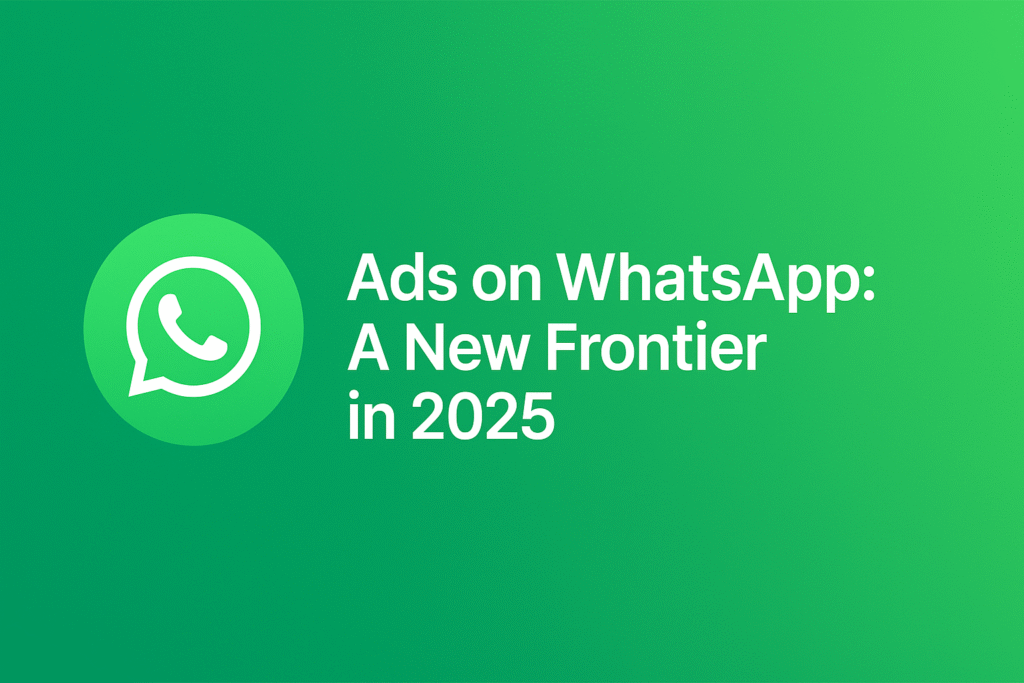
Introduction For years, WhatsApp has been the world’s most personal messaging platform. With over 2.95 billion users in 2025, it has been a place for private conversations, customer support, and increasingly—business communication. But now, a major shift is here: Meta has officially introduced Ads on WhatsApp. This marks a new frontier in digital marketing—one that combines the intimacy of chat with the reach of advertising. In this blog, we’ll explore what this means for businesses, how ads on WhatsApp work, and what strategies you can use to stay ahead. Why Ads on WhatsApp Matter in 2025 For brands, this means your customers can see an ad, click to chat, explore products, and even pay—all without leaving WhatsApp. Where Will WhatsApp Ads Appear? According to Meta’s 2025 rollout plan: Opportunities for D2C & E-commerce Brands For D2C brands, Shopify stores, and online sellers, this is a game-changer: If you run a Shopify or WooCommerce store, this is the right time to sync your WhatsApp catalog with your campaigns. Challenges & Considerations How to Prepare Your Business Global & Local Impact Future Outlook WhatsApp ads are not just another format—they represent the shift from interruptive marketing to conversational commerce. In the next 2 years, we may see: Conclusion Ads on WhatsApp in 2025 are more than a trend—they are the future of digital marketing. For businesses, this is the moment to adapt, experiment, and scale. With tools like TheBotMode, you can not only run WhatsApp campaigns but also automate customer journeys, reduce costs, and maximize ROI. Ready to leverage the power of WhatsApp ads? Start Free Trial with TheBotMode and take your brand into the new era of conversational marketing. FAQs 1. Are WhatsApp ads available for all businesses in 2025?Yes, Meta has rolled them out globally, starting with Updates Tab ads and Click-to-Chat. 2. How much do WhatsApp ads cost?Ad spend depends on impressions/clicks, plus conversation charges (₹0.78 marketing / ₹0.11 utility in India). 3. Can I track ROI on WhatsApp ads?Yes. You can measure impressions, chat opens, conversations, and conversions with Meta Business Suite and automation tools like TheBotMode. 4. Will ads affect user privacy on WhatsApp?No—private messages remain encrypted. Ads appear only in Updates and Channels. 5. Which industries benefit most from WhatsApp ads?D2C, e-commerce, travel, real estate, education, and local services benefit most due to high engagement and instant chat.
WhatsApp Upselling Strategies Every D2C Brand Needs in 2025
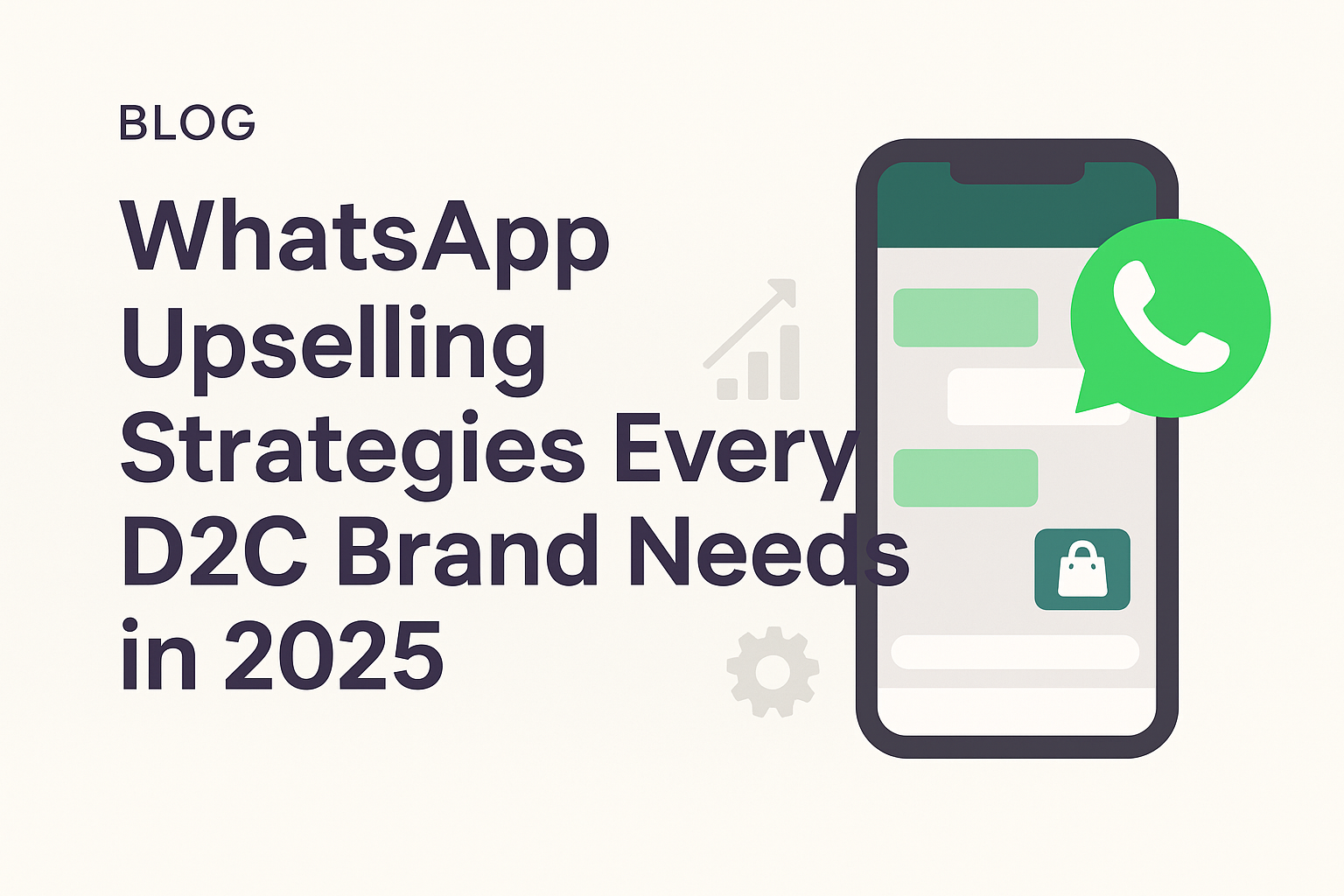
Introduction Direct-to-consumer (D2C) brands are entering 2025 with a clear priority: drive growth through personalized engagement. And where do customers want that engagement? On WhatsApp. With over 2.7 billion monthly active users and 98% open rates, WhatsApp has become the world’s most powerful channel for upselling and conversational commerce. For D2C brands, WhatsApp isn’t just a messaging app—it’s a sales engine. From AI-driven recommendations to in-chat payments, the opportunities for boosting average order value (AOV) and customer lifetime value (CLV) are unmatched. Here are the WhatsApp upselling strategies every D2C brand needs in 2025. Why WhatsApp is a Must for D2C Upselling in 2025 👉 For a deeper dive into WhatsApp commerce, check out our internal resource: WhatsApp for Upselling. Top WhatsApp Upselling Strategies for D2C Brands in 2025 1. Segment Your Audience for Precision Upselling Not all customers respond to the same offer. Use WhatsApp’s customer labeling to group buyers: 2. Automate with AI-Driven WhatsApp Chatbots AI-powered chatbots can upsell 24/7, recommending products based on browsing or purchase history. 3. Build Rich, Interactive Product Catalogs Instead of sending plain text messages, showcase your full product catalog inside WhatsApp: This transforms WhatsApp into a mini e-commerce store. Conclusion WhatsApp is no longer just a chat app—it’s the ultimate D2C upselling platform of 2025. With segmentation, AI automation, interactive catalogs, and in-chat payments, brands can create seamless, personalized buying experiences that drive higher sales and deeper loyalty. Ready to start? Explore our in-depth guide here: WhatsApp for Upselling. FAQs (Voice Search Optimized) Q1: What are the best WhatsApp upselling strategies for D2C brands in 2025? The best strategies include segmentation, AI chatbots, interactive catalogs, in-chat payments, and VIP broadcast lists. Q2: Can customers pay directly in WhatsApp? Yes—through UPI and WhatsApp Pay, making upselling seamless at checkout. Q3: How do I personalize WhatsApp upselling? Use customer segments, AI-driven recommendations, and dynamic messaging tailored to past purchases. Q4: How often should I send WhatsApp upsell messages? 1–2 times per week is ideal—prioritize value and avoid spamming. Q5: Is WhatsApp upselling better than email? Yes, WhatsApp sees 98% open rates and up to 3x higher conversions compared to email.
Why Broadcast Auto-Retry is a Game-Changer for WhatsApp Marketing Campaigns

Introduction In WhatsApp marketing, every message counts. But what happens when a broadcast fails due to network issues, phone unavailability, or temporary errors? That’s where Broadcast Auto-Retry steps in. This smart feature ensures your messages don’t just stop at failure—they get another chance to reach your audience. What is Broadcast Auto-Retry? Broadcast Auto-Retry is an automation feature that re-sends failed WhatsApp campaign messages to customers after a short interval. Instead of losing potential engagement due to a one-time error, the system automatically retries until delivery is confirmed. Why is Auto-Retry a Game-Changer? How Broadcast Auto-Retry Works in TheBotMode This ensures your brand doesn’t lose out on sales just because of a temporary glitch. Practical Use Cases for D2C Brands Conclusion The Broadcast Auto-Retry feature is not just a convenience—it’s a necessity for D2C brands relying on WhatsApp for sales and engagement. With better delivery, stronger engagement, and higher conversions, it ensures your campaigns always perform at their best. Start using Broadcast Auto-Retry in TheBotMode and never miss a customer again.













